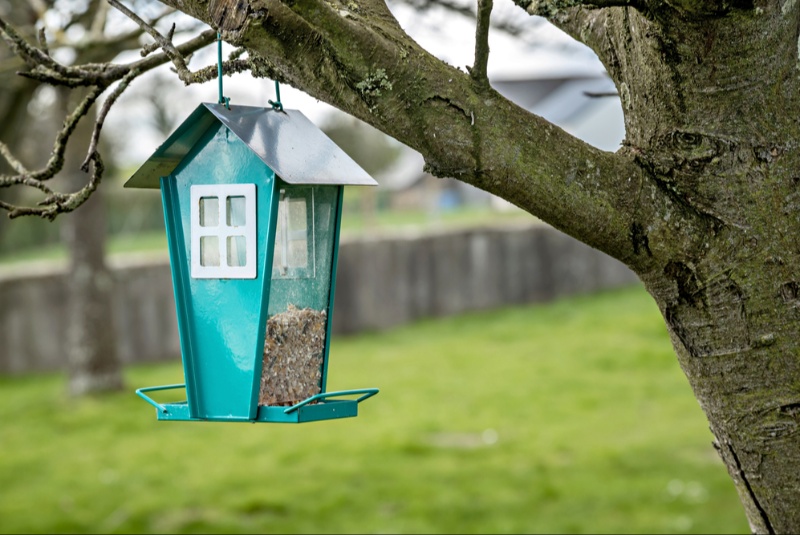Bird enthusiasts know that bird-watching involves more than just a pair of binoculars. A well-placed bird feeder can transform your backyard or balcony into a lively stage for avian activity. However, with numerous options available, selecting the right bird feeder to suit both your feathered friends and your personal preferences can feel overwhelming. This guide will walk you through key considerations to help make an informed purchase for your ideal bird feeder.
1. Understanding Bird Feeding Basics
Before choosing a bird feeder, it's helpful to clarify your goals. Start by considering these essentials:
- Target Bird Species: Different bird species have unique feeding preferences. For example, cardinals and jays enjoy platform feeders, while smaller birds like finches prefer tube feeders. Knowing which birds you want to attract helps guide your choice.
- Feeder Placement: Think about where you'll place the feeder. A feeder near a window provides great views but may increase the risk of bird collisions. Placing it farther away may be safer for birds but may reduce visibility from indoors.
These basic considerations help align your choices with your goals and the needs of local bird species.
2. Exploring Different Types of Bird Feeders
Bird feeders come in various styles, each designed for specific food types and birds. Here are the main types to consider:
- Platform Feeders: These flat, open feeders allow easy access for larger birds like cardinals. However, they lack protection from rain or snow, so regular cleaning is essential.
- Tube Feeders: These cylindrical feeders have multiple ports for small birds like finches. They’re versatile for different seeds and help keep seeds dry longer than open feeders.
- Hopper Feeders: Shaped like a small house, hopper feeders provide a sheltered space with a platform base, attracting multiple bird species and protecting seeds from the elements.
- Suet Feeders: Typically made of mesh, these hold suet cakes for birds like woodpeckers and nuthatches that enjoy high-energy food.
- Nectar Feeders: Specifically for hummingbirds and orioles, nectar feeders hold sugary solutions that mimic natural nectar from flowers. Regular cleaning is crucial to prevent mold or bacteria growth.
Choosing the right type depends on the species common in your area and those you hope to attract.
3. Material and Durability: Choosing the Right Build
The durability of a bird feeder often depends on its materials. Here’s a breakdown of common options:
- Wood: Natural-looking and attractive, wooden feeders blend well with outdoor spaces. Cedar or redwood are more durable against weather but may need regular maintenance.
- Metal: Metal feeders are durable and resistant to animal damage, especially from squirrels. However, they can get hot in direct sunlight, so shaded placement is ideal.
- Plastic: Affordable and easy to clean, plastic feeders are lightweight but can become brittle over time. Look for UV-resistant plastic for longer-lasting performance.
Selecting a durable material ensures your feeder stands up to local weather and provides lasting enjoyment for both you and the birds.
4. Maintenance and Cleanliness
A clean feeder is essential to prevent disease among birds. Regular maintenance not only keeps your feeder appealing but also ensures a healthy feeding environment. Follow these steps to keep your feeder clean:
- Regular Seed Replacement: Replace seeds often, especially in wet weather. Moldy or sprouting seeds can be harmful to birds.
- Routine Cleaning: Use a mild detergent solution to scrub the feeder every few weeks. Ensure it’s dry before refilling to prevent mold growth.
- Disinfect as Needed: Every few months, soak the feeder in a diluted bleach solution (one part bleach to nine parts water) and rinse thoroughly. This helps prevent the spread of bacteria and fungi.
Maintaining cleanliness in your feeder not only attracts more birds but also promotes their health and safety.
5. Preventing Predators and Pests
To protect food for birds, many feeders include features to deter pests like squirrels and raccoons. Consider these options:
- Weight-Sensitive Perches: Some feeders close access when heavier animals like squirrels try to feed, preserving food for birds.
- Baffles: Dome-shaped attachments help prevent climbing animals from reaching the feeder, particularly effective against squirrels.
- Mesh Screens: Mesh screens on suet and nectar feeders allow birds access while deterring larger animals.
With the right pest-resistant features, you can ensure that food remains available to birds while keeping away unwanted visitors.

6. Budget-Friendly Options
Bird feeders vary widely in price, from basic to high-end designs. While a lower-cost option might save money initially, investing in quality can offer better longevity and features. Consider how often you’ll use the feeder and any desired additional features. Selecting a durable, quality feeder provides better value over time.
7. Extra Features to Enhance Your Bird-Watching Experience
Some modern bird feeders come with additional features that enhance both their functionality and your bird-watching experience:
- Ant Moats: Nectar feeders often include ant moats to prevent ants from reaching the nectar, ideal for hummingbird feeders.
- Rain Guards: Protecting the feeder from rain helps keep seeds dry, reducing waste and maintaining cleanliness.
- Built-in Cameras: Some high-tech feeders come with cameras for capturing close-up footage of visiting birds, adding a new dimension to bird-watching.
While these extra features can increase the feeder's cost, they may significantly improve your enjoyment and the variety of visiting birds.
Transforming Your Outdoor Space into a Bird Haven
Choosing the right bird feeder involves knowing your local bird species, considering your budget, and selecting durable, functional features. By focusing on these elements, you can create a welcoming environment for birds, making your outdoor space a vibrant spot filled with songs and colorful activity. Whether you’re a seasoned bird-watcher or a newcomer, the right feeder brings joy, countless moments of beauty, and a thriving community of feathered visitors to your space.




